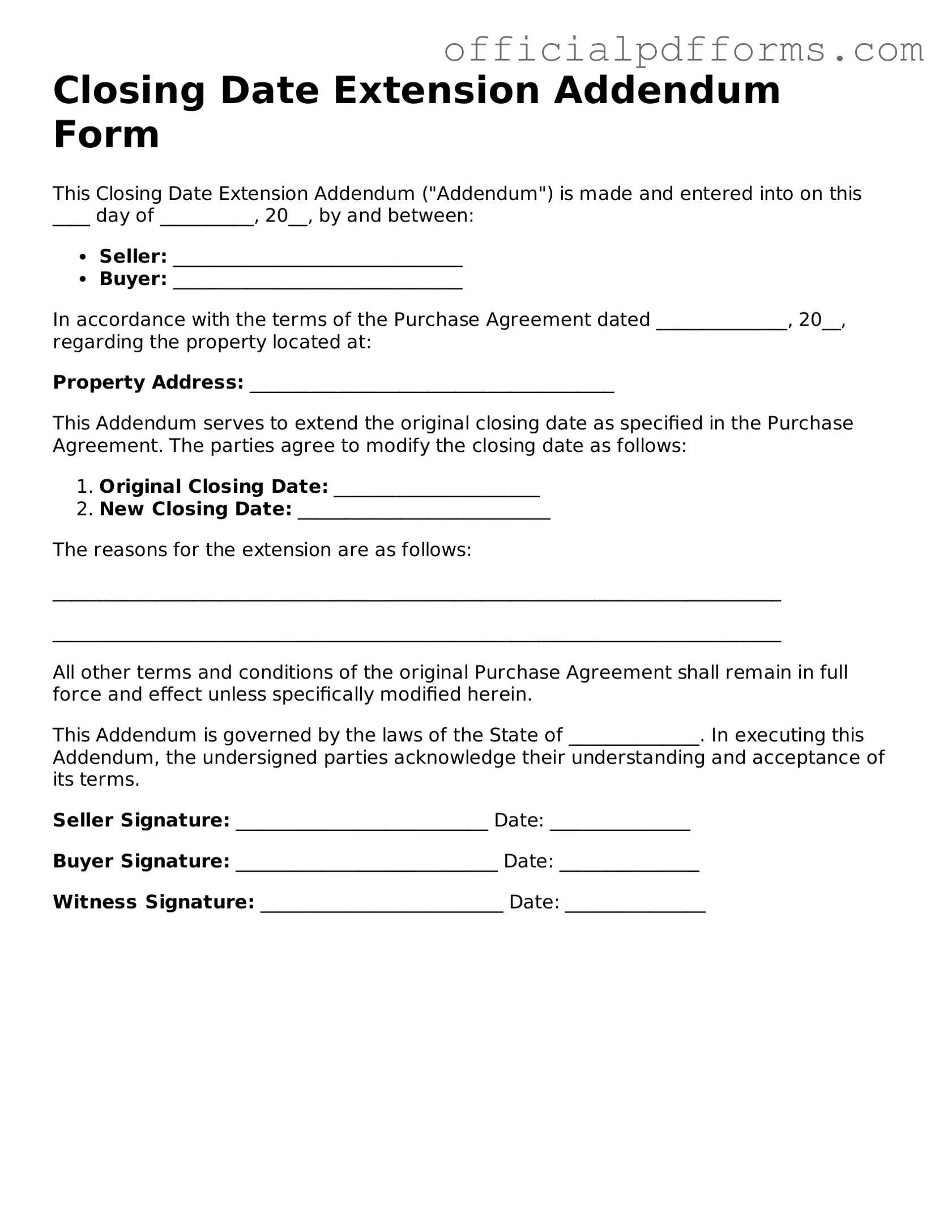The Closing Date Extension Addendum Form is a document used in real estate transactions. It allows parties involved in a sale to officially extend the closing date of the property transaction. This can be necessary for various reasons, such as delays in financing, inspections, or other contingencies that need more time to resolve.
You should consider using the Closing Date Extension Addendum Form when you and the other party agree that more time is needed before the closing can take place. Common scenarios include:
-
Unexpected issues with the property that require additional inspections.
-
Delays in securing financing or mortgage approval.
-
Personal circumstances affecting either party's ability to close on the original date.
It’s important to communicate with all parties involved and ensure everyone agrees to the new closing date.
Filling out the Closing Date Extension Addendum Form is straightforward. Here are the key steps:
-
Start with the names of all parties involved in the transaction.
-
Clearly state the original closing date and the new proposed closing date.
-
Include any specific reasons for the extension, if necessary.
-
Make sure all parties sign and date the form to confirm their agreement.
Be sure to keep a copy for your records after it has been signed.
Is there a fee associated with extending the closing date?
Typically, there is no direct fee for using the Closing Date Extension Addendum Form itself. However, it’s important to check with your real estate agent or attorney. They may advise you on any potential costs that could arise from delays, such as changes in loan terms or additional inspections that may be needed.
What happens if the new closing date is missed?
If the new closing date is missed, it can lead to complications. Depending on the terms of the original purchase agreement, this may result in penalties or the potential loss of the property. To avoid this, it’s crucial to communicate proactively with all parties and ensure that everyone is on the same page regarding timelines and expectations. If further delays are anticipated, consider drafting another extension addendum.
